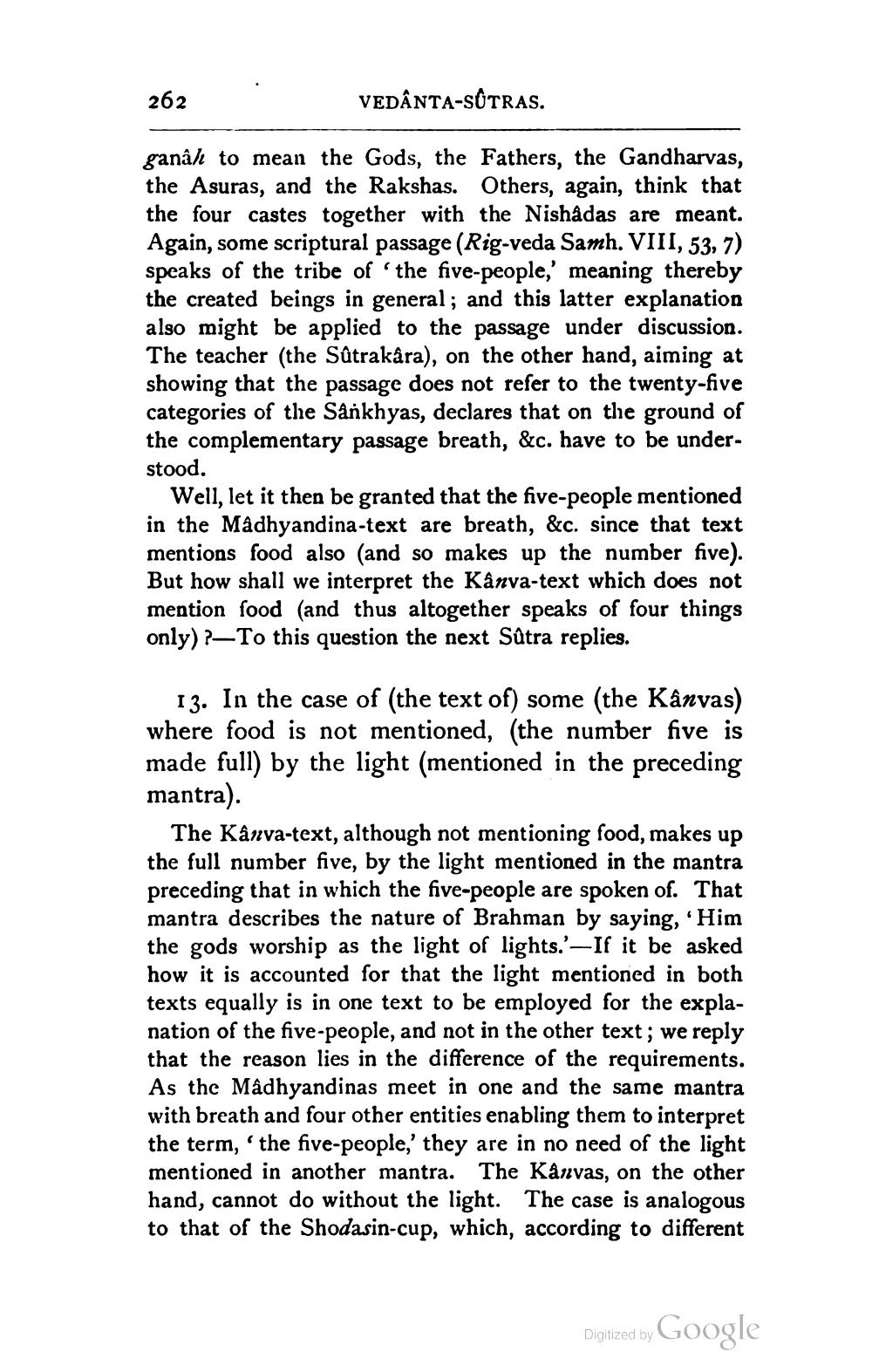________________
262
VEDÂNTA-SOTRAS.
ganâh to mean the Gods, the Fathers, the Gandharvas, the Asuras, and the Rakshas. Others, again, think that the four castes together with the Nishadas are meant. Again, some scriptural passage (Rig-veda Samh. VIII, 53, 7) speaks of the tribe of 'the five-people,' meaning thereby the created beings in general; and this latter explanation also might be applied to the passage under discussion. The teacher (the Sûtrakâra), on the other hand, aiming at showing that the passage does not refer to the twenty-five categories of the Sankhyas, declares that on the ground of the complementary passage breath, &c. have to be understood.
Well, let it then be granted that the five-people mentioned in the Mâdhyandina-text are breath, &c. since that text mentions food also (and so makes up the number five). But how shall we interpret the Kânva-text which does not mention food and thus altogether speaks of four things only) ?—To this question the next Sûtra replies.
13. In the case of (the text of) some (the Kanvas) where food is not mentioned, (the number five is made full) by the light (mentioned in the preceding mantra).
The Kânva-text, although not mentioning food, makes up the full number five, by the light mentioned in the mantra preceding that in which the five-people are spoken of. That mantra describes the nature of Brahman by saying, 'Him the gods worship as the light of lights.'-If it be asked how it is accounted for that the light mentioned in both texts equally is in one text to be employed for the explanation of the five-people, and not in the other text; we reply that the reason lies in the difference of the requirements. As thc Madhyandinas meet in one and the same mantra with breath and four other entities enabling them to interpret the term, the five-people,' they are in no need of the light mentioned in another mantra. The Kanvas, on the other hand, cannot do without the light. The case is analogous to that of the Shodasin-cup, which, according to different
Digized by Google




